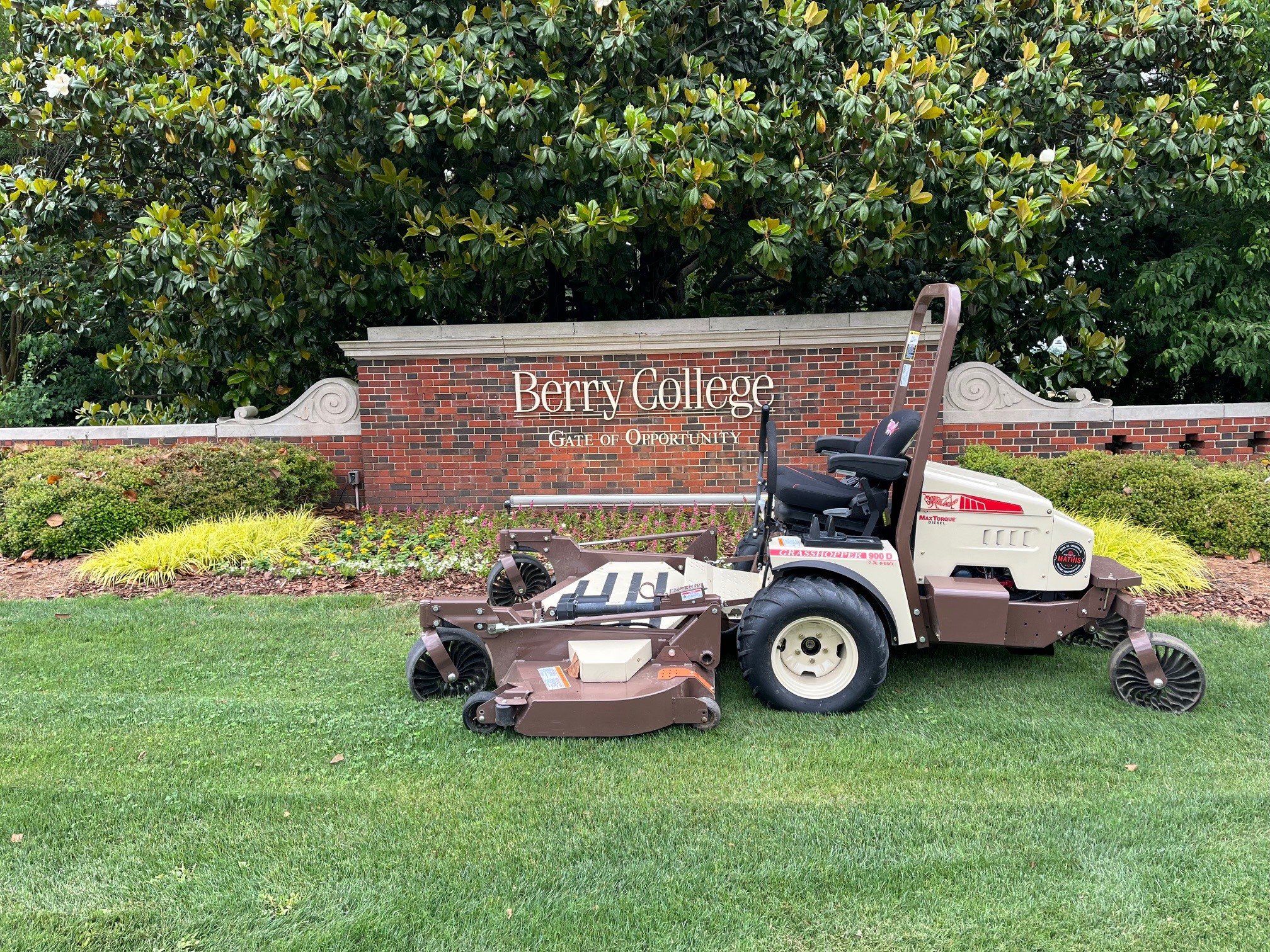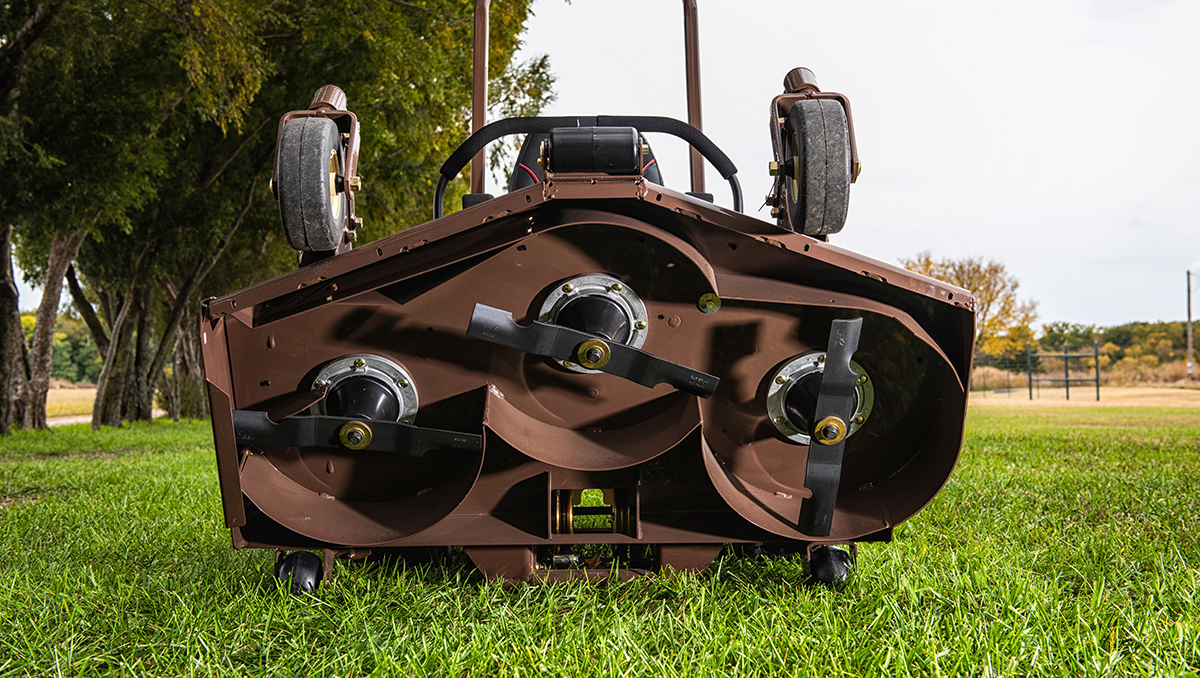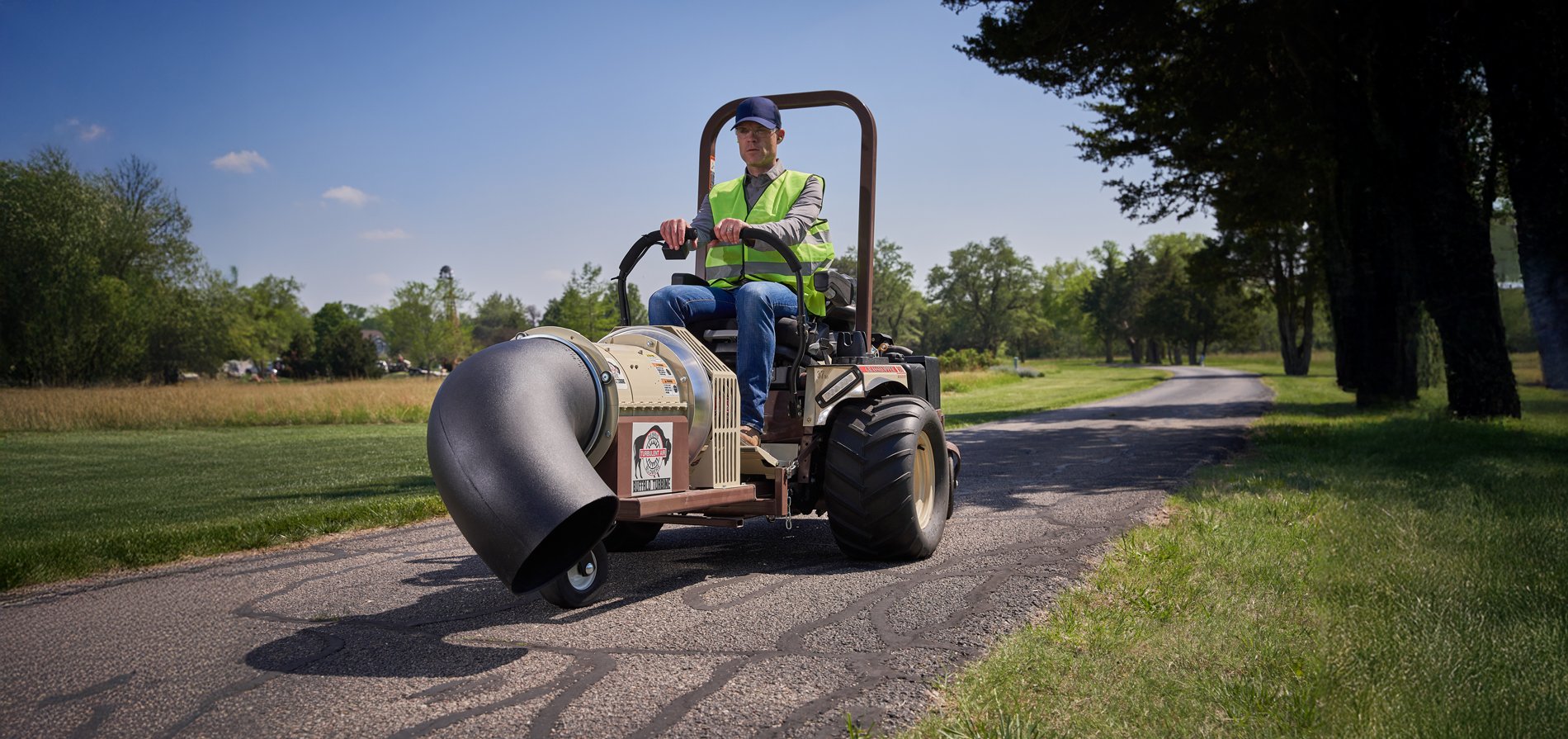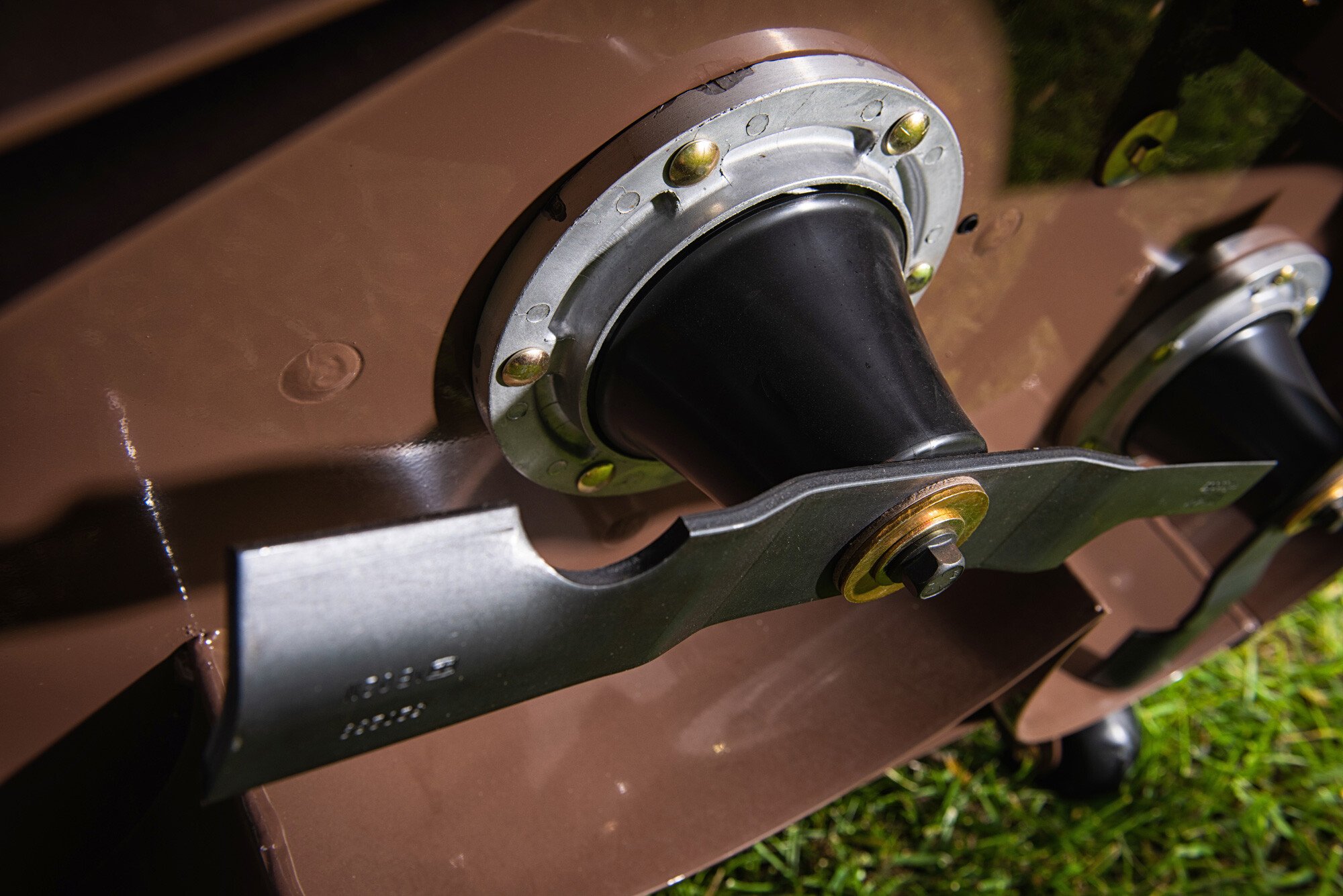Sharp, balanced mower blades are important for a lawn’s health along with productivity in the field, and reducing unnecessary wear and tear on the machine. Imbalanced blades cause vibration that leads to unnecessary stress on the mower deck and mower frame itself.
Also, dull blades tear at grass rather than delivering a clean cut. Turf then becomes more vulnerable and brittle and the vicious cycle continues with a reduced ability to take up nutrients and water, which eventually affects the root system. You end up with weak turf that is more susceptible to weeds, disease and insects. However, clean and even cuts from sharp, balanced blades allow turf to heal quickly from mowing, promoting turf health. Plus you’ll achieve a manicured appearance and get the job done faster because sharp blades cut grass with ease.
Sharpening and balancing mower blades is a relatively quick process that goes a long way toward achieving a high-quality cut and reducing machine maintenance while increasing the return on your equipment investment. An acceptable timeframe for sharpening intervals is following every 8 to 12 hours of run time. However, pay close attention to mowing conditions. Blades will wear out sooner than 8 hours when mowing overgrown yards, properties with sandy soil and striking objects like downed sticks, exposed tree roots and golf balls. Watch for tell-tale signs of dull blades: torn or shredded clippings, uneven cuts and/or uncut strips of turf.
Many landscape contractors who are mowing all day during peak season change blades daily to maintain fresh cuts. For efficiency’s sake, they sharpen the blades they remove back at the shop then put them back into the rotation.
Mower blade sharpening pointers
First, examine the blade to determine if it is overly worn or warped. If so, it can become dangerous so you should discard it and replace the blade with a new one. If the blade is still in good condition, then proceed with sharpening and balancing.
Always clean the blade first to remove debris buildup. We also recommend checking the blade balance at this point to determine if it is straight or bent before proceeding with blade sharpening. Different types of balancers are available, depending on your preference, from inexpensive table-top cone balancers to wall-mounted magnetic balancers with gauge rods to check straightness. If the blade is straight, you can proceed to blade sharpening. As with blade balancers, there are several methods for sharpening blades, ranging from an angle grinder and a vice to a vertical belt grinder to specially designed sharpening kits with pre-set angles for precision sharpening.
Safety gloves and eye protection are a necessity. The most common angle for the cutting edge is 30 degrees, but you should always match the angle to the factory edge. Sharpen the blade with smooth, even passes in one direction while applying gentle pressure. Only sharpen the cutting edge of the blade, moving from the blade tip to where angling stops.
After you sharpen the blade, proceed to balancing. If you notice one side is heavier, return to sharpening until the blade is balanced.
When purchasing a mower or adding to your fleet, pay close attention to the blade type because the material can make an impact on how long a blade will hold its edge. GrassMax is the only blade system in the world manufactured to meet the precise design specifications incorporated into every Grasshopper DuraMax deck. The cutting edge MARBAIN blades are proven to hold their edge longer than aftermarket blades and deliver a longer life span.
How to properly sharpen mower blades, step by step
Now that you understand why sharpening and balancing your mower blades is crucial for the health of turf and your mower, follow these steps to complete the job:
- Wear work gloves and protective glasses before beginning.
- Carefully pass the blade center across the grindstone to remove debris. A file can also be used if a grindstone is not available. Repeat for the other side.
- Once clean, check to see if the blade is straight and not bent by placing it on the balancer and giving it a gentle spin. If the blade is warped, it will wobble unevenly, and if it sinks to one side, it is unbalanced.
- Begin sharpening a straight blade by setting the sharpener to the factory angle (most common angle is 30 degrees).
- Evenly pass the angled blade edge across the sharpener, or pass your angle grinder across the blade in one direction from the tip until where the angle stops. Repeat this step, stopping to check blade sharpness by examining the cutting edge.
- Flip the blade and sharpen the other cutting edge in the same manner, repeating with even passes across the blade in one direction.
- Once sharpened, check blade balance to ensure both cutting edges are the same thickness. Place the blade on the balancer. If it tips toward one side, you’ll know this heavier edge requires more sharpening. Repeat the sharpening and balancing process until the blade is even and cutting edges are straight.
Deliver an uncompromised quality cut with Grasshopper
Routine blade sharpening and ensuring mower blades are balanced reduces maintenance over the life of your mower, preserves your equipment investment, and delivers the quality cut you expect.
Interested in some mowing tips from the pros at Grasshopper? Our library of how-to videos and newsletter provide helpful information. Thinking about a new mower? Our team can help you choose the best model for your needs.





